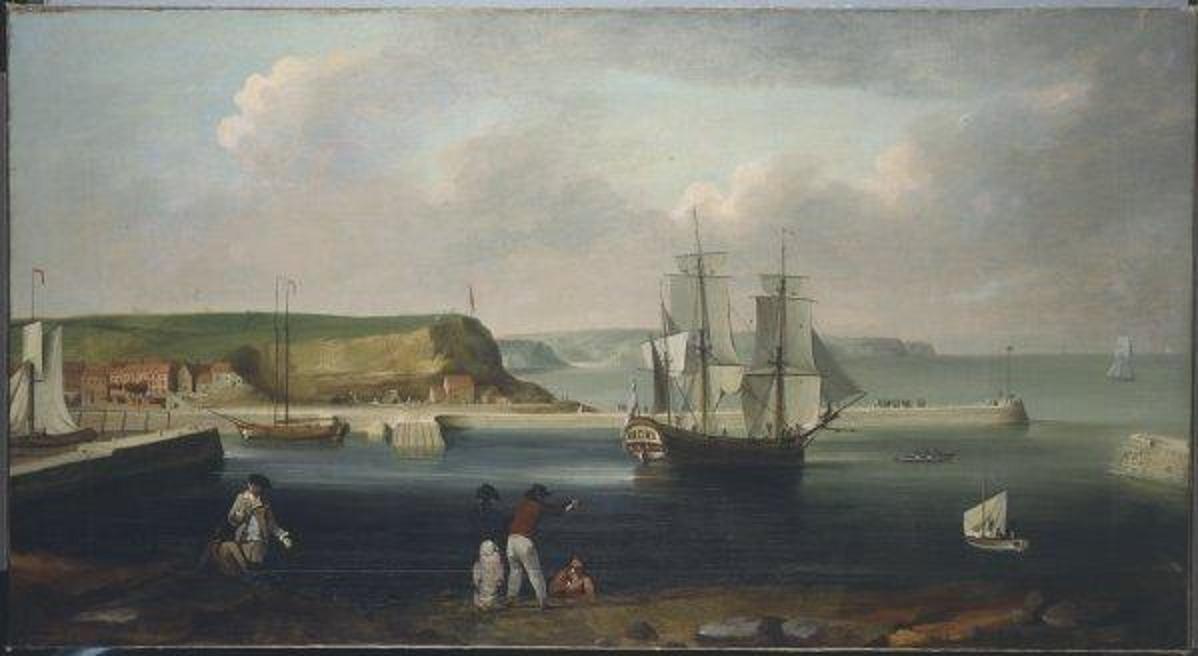 |
| Earl of Pembroke, later HMS Endeavour, leaving Whitby Harbour in 1768. By Thomas Luny, dated 1790 |
Europeans already knew about the existence of New Holland (Australia), named by the Dutch seafarer Abel Tasman in 1606, as 180km of Western Australia's south-west coast had already been mapped by the Dutch ship Leeuwin in 1627.
Cook's journey to the other side of the globe, across thousands of miles of ocean, navigating in uncharted and unknown waters, is often compared to astronauts going to the Moon or Mars. This is well expressed by Cook, who later wrote, "Ambition leads me not only farther than any other man has been before me, but as far as I think it possible for man to go".
After spending six months charting the New Zealand coast, Cook and his crew set sail into open sea, on 1 April 1770, sailing west toward New Holland.
The Endeavour first sighted the east coast of Australia at Point Hicks on 20 April 1770 and on the 29th April, Cook and his crew became the first Europeans to land on the east coast of Australia, at what Cook called Stingray Harbour, later, Botany Bay. The Endeavour then headed north charting the east coast.
Many Europeans, including the British, thought that another larger Terra Australis (South Land), should exist in addition to New Holland, as it had been believed since antiquity, that the landmass of the Northern Hemisphere, should be balanced by land in the south.
Cook's journey to the other side of the globe, across thousands of miles of ocean, navigating in uncharted and unknown waters, is often compared to astronauts going to the Moon or Mars. This is well expressed by Cook, who later wrote, "Ambition leads me not only farther than any other man has been before me, but as far as I think it possible for man to go".
After spending six months charting the New Zealand coast, Cook and his crew set sail into open sea, on 1 April 1770, sailing west toward New Holland.
The Endeavour first sighted the east coast of Australia at Point Hicks on 20 April 1770 and on the 29th April, Cook and his crew became the first Europeans to land on the east coast of Australia, at what Cook called Stingray Harbour, later, Botany Bay. The Endeavour then headed north charting the east coast.
 |
| Landing of Captain Cook at Botany Bay, 1770, E. Phillips Fox |
Lively Eyes
Whilst observing the Aboriginal inhabitants of New Holland, the official botanist, Joseph Banks wrote: "Their eyes were in many lively and their teeth even and good" and “They were all of them clean limn’d, active and nimble. Cloaths they had none, not the least rag, those parts which nature willingly conceals being exposed to view compleatly uncovered”.
_-_Google_Art_Project.jpg) |
| Daguerreotype photograph (circa 1847) described as "Group of Koorie men" by the National Gallery of Victoria |
On June 10, the Endeavour struck the Great Barrier Reef, almost coming to grief and resulting in severe damage to the ship. After repairs were carried out, the Endeavour rounded Cape York, stopping at Possession Island in the Torres Strait on 22 August, which Cook later claimed in the name of King George III, naming it "Possession Island". This ceremony probably did not occur.
The Endeavour then returned to England, after having circumnavigated the globe and venturing further south than had ever been done before.
The Endeavour then returned to England, after having circumnavigated the globe and venturing further south than had ever been done before.



